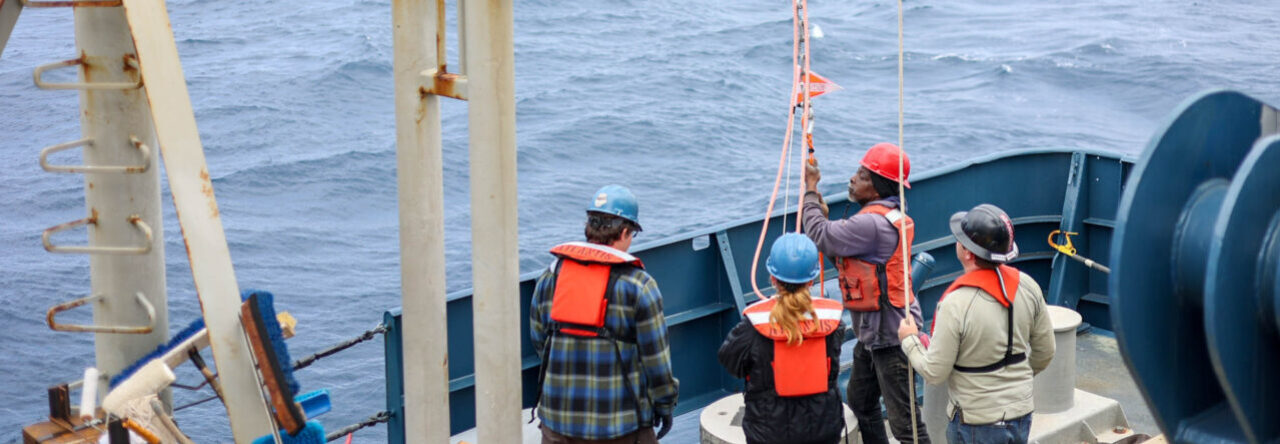Week #8 Tahitian Escapade (11/25/2024 – 12/1/2024)
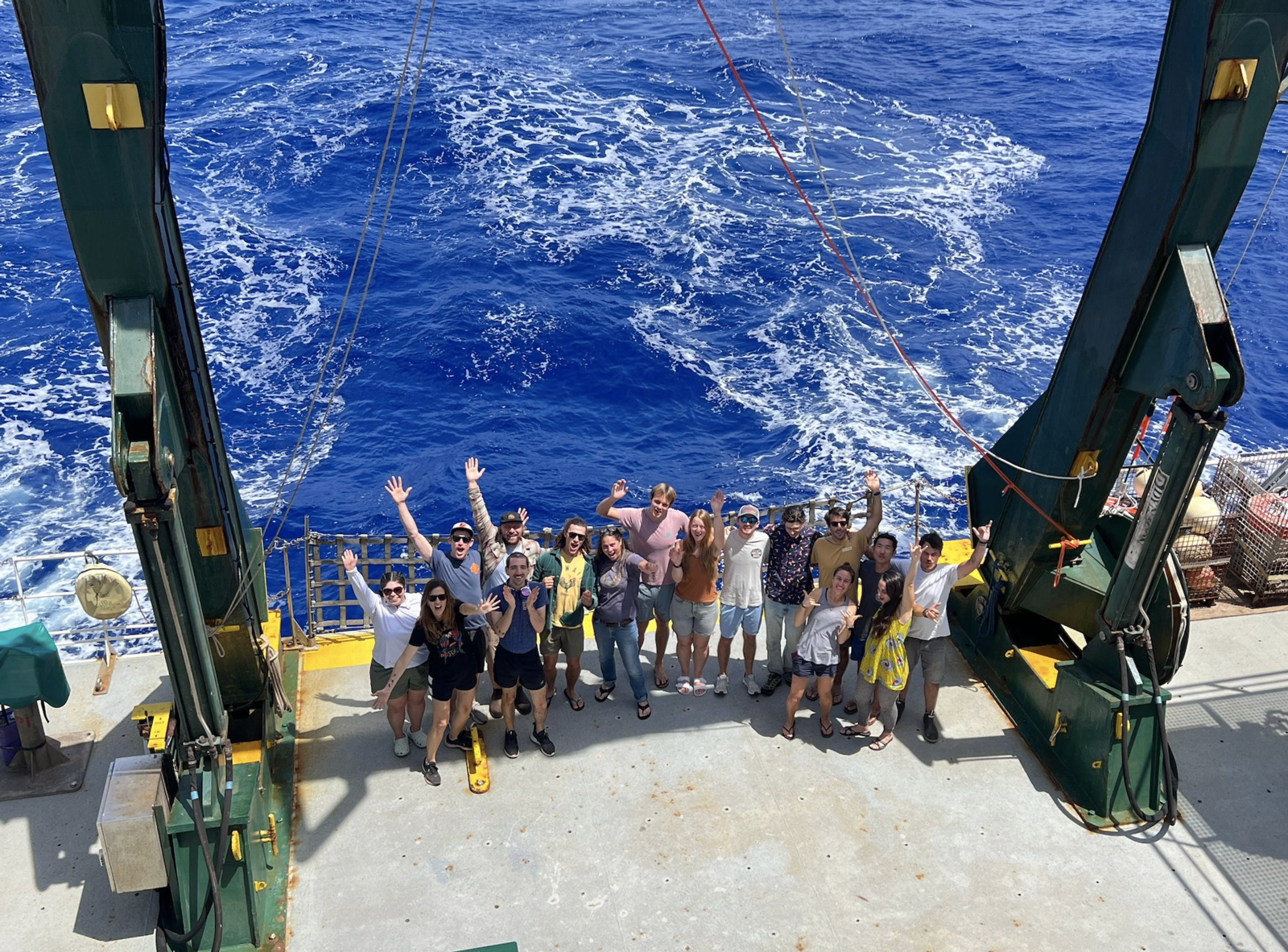
– The SPOC 2418 Science team!
We wrapped up our last station a few days before reaching Tahiti leaving us with enough time to acid wash every bottle, spigot and syringe used during the cruise. As well as enough time to tidy up lab spaces; sweeping, mopping and wipping down counters in the labs and moving stuff into specific labs for storage while on transit back.
We arrived in Tahiti on Nov 26th, at about 7am after 34 days at sea. Once near port, the Tahitian Port Captain came onboard using the ladders on the back deck. The port captain then headed up to the bridge to drive the boat into the dock safely, which was a really cool and swift operation to watch.
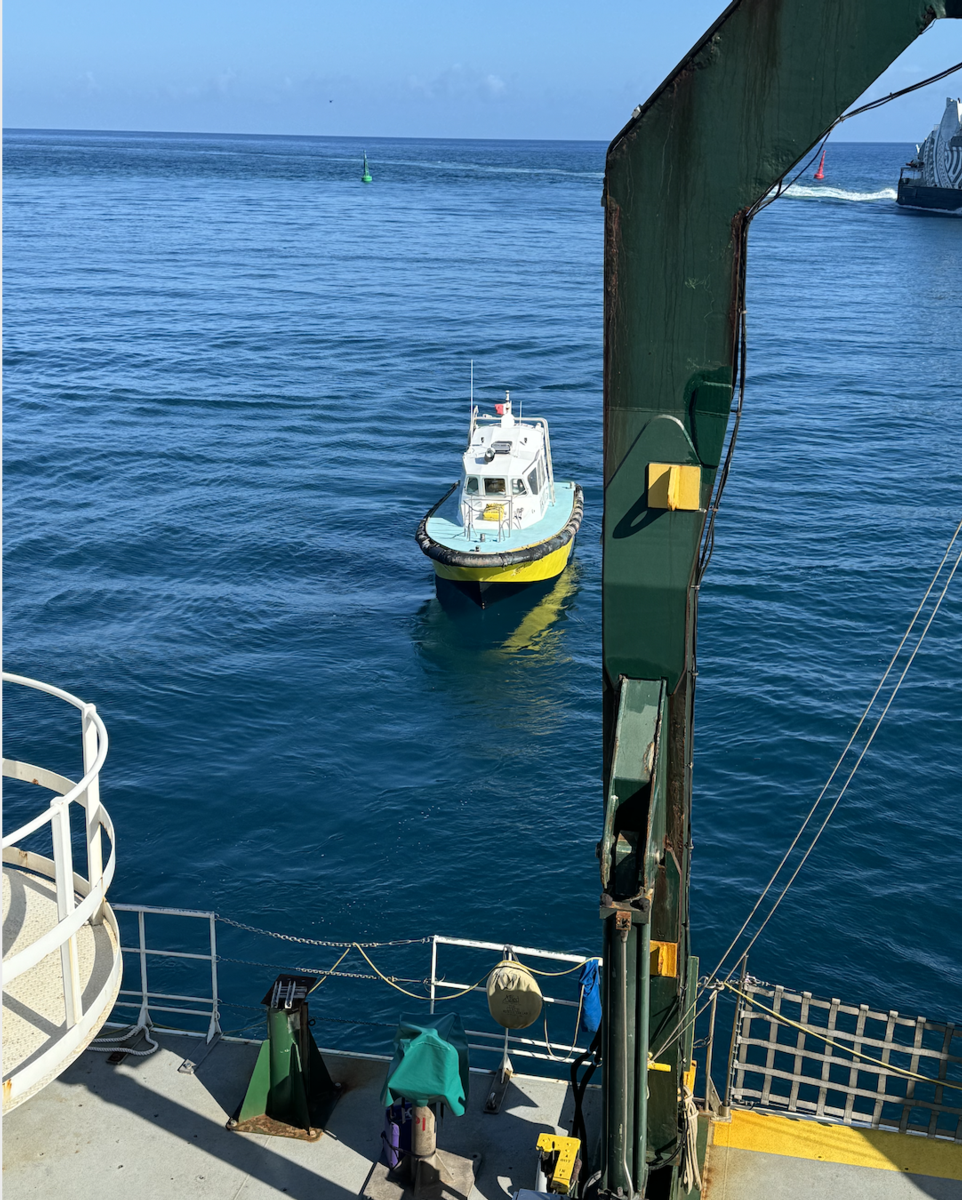
– Tahitian Harbor Police moving towards the ship to begin driving the RV/Kilo Moana to port.
As we slowly drifted into port the anticipation kept building. Land! So close yet so far. From the ship we could now see green volcanic-jagged hills, palm trees, birds and dolphins as well as the hustle and bustle of cars and people going about their day. As the port came into focus, I felt a bit like an alien peering into a civilization of French billboard signs and aquamarine water. I think I breifly forgot cars and trees existed. Whoa, we made it! In the middle of this ginormous Pacific ocean there are people living their life on a beautiful tropical island, quite remote from any mainland and we’ve reached them, how lucky are we!
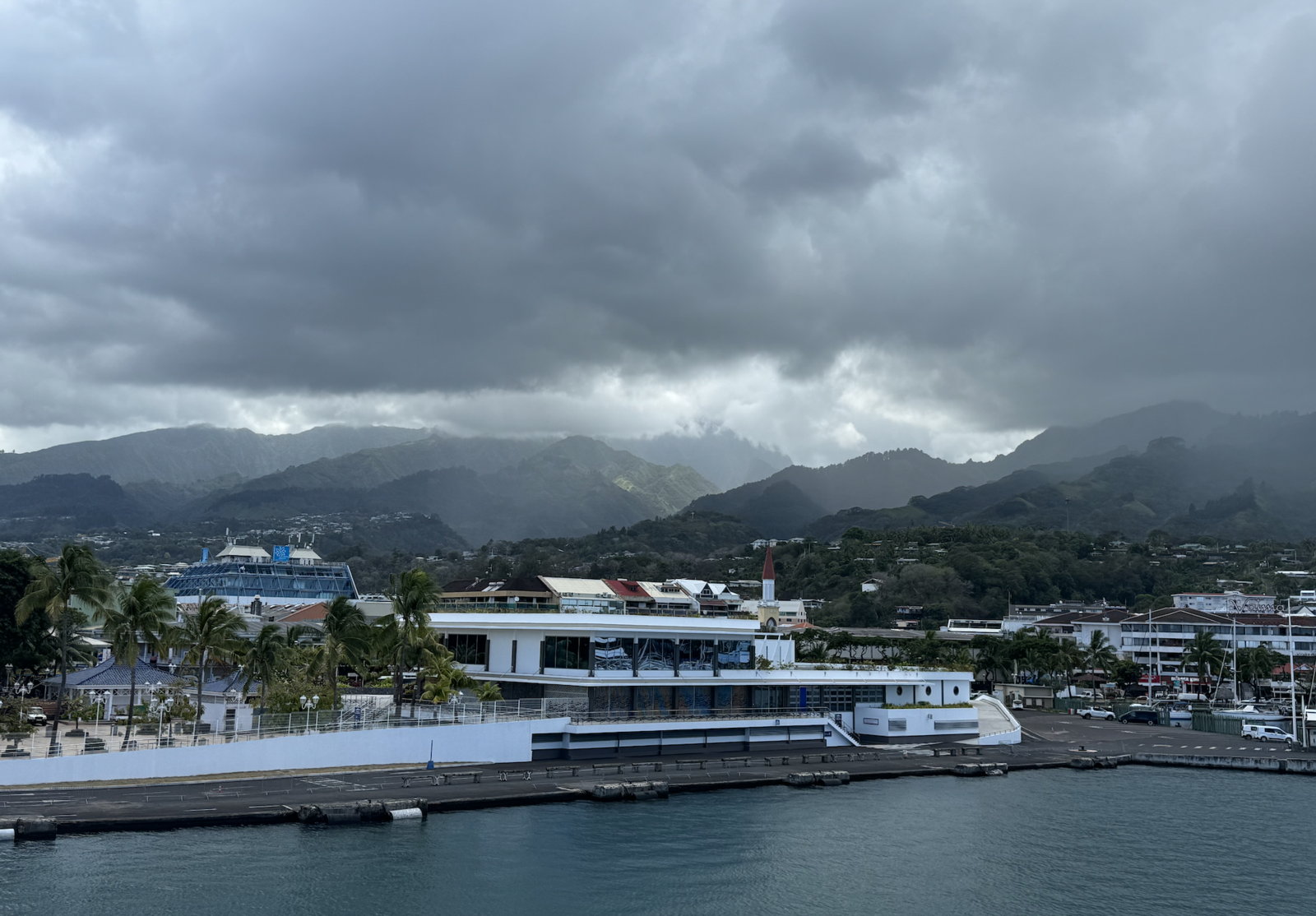
– View of Papeete as we arrived to port on the RV/Kilo Moana
The energy was high and everyone was in a bit of a scramble getting their bags downstairs, cleaning out state rooms and putting all blankets and dirty linens away.
Once we cleared immigration, we were allowed to get off the ship. Since most people were leaving that day, we got straight to action, checking out the Tahitian open air market, shops and restaurants. The scientific team picked out a place for lunch and we enjoyed tropical refreshments before tearfully saying our goodbyes.
The following day, a couple of us took a rental car on the ferry to Moorea to circumnavigate the island and to visit some snorkeling spots. We visited 3 different beaches and saw tons of cool fish and even a sea turtle!
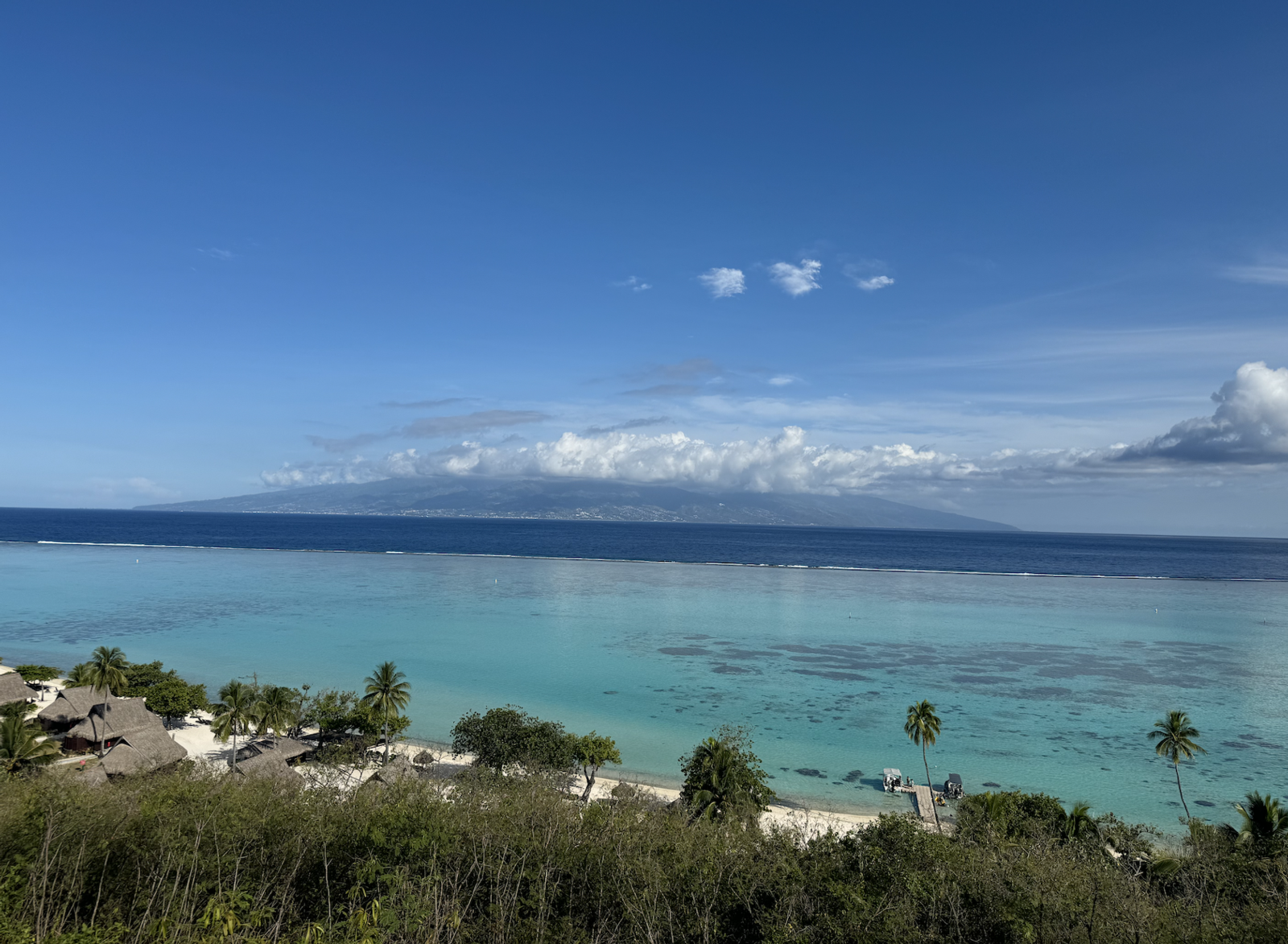
– View of Tahiti from Mo’orea, note the beautiful aquamarine color from the shallower parts
The following morning, immigration came on pretty early and cleared us to leave, thus concluding our Tahitian escapadé. We then set sail back to Honolulu, HI at 10am on November 28th, with only 20 people, 5 science members (Hunter, Dr. Ali Chase, OTG and I) + 15 crew members. Today also happened to be thanksgiving. For Thanksgiving, I couldn’t help but feel really thankful for this opportunity to learn at sea with an amazing group of scientist and crew members. I have so much grattitude for everybodies willingness to share knowledge and the ropes of doing science at sea (pun intended). That evening the galley crew cooked us a lovely dinner of turkey, stuffing, mac and cheese and more which was really nice.

– Two new passport stamps, peek the lil’ ship symbol on the stamps.
Nonetheless, it was time to get back to work. By noon, we were helping Dr. Ali Chase get a pySAS instrument set up at the bow, since it had been decomissioned going into port. The pySAS instrument is an open-source autonomous sun-tracking system that records incoming and reflecting solar radiation from the atmosphere and ocean. The data collected is used to cross reference and validate remote sensing and satellite data and can also be used to elucidate oceanographic properties of the water surface. Since the one on the bow gave us a bit of trouble, we decided to start working on the spare that her lab also has. It was fun getting a quick dive into the different parts of the instrument, moving wires around and checking whether things are working using a voltmeter.
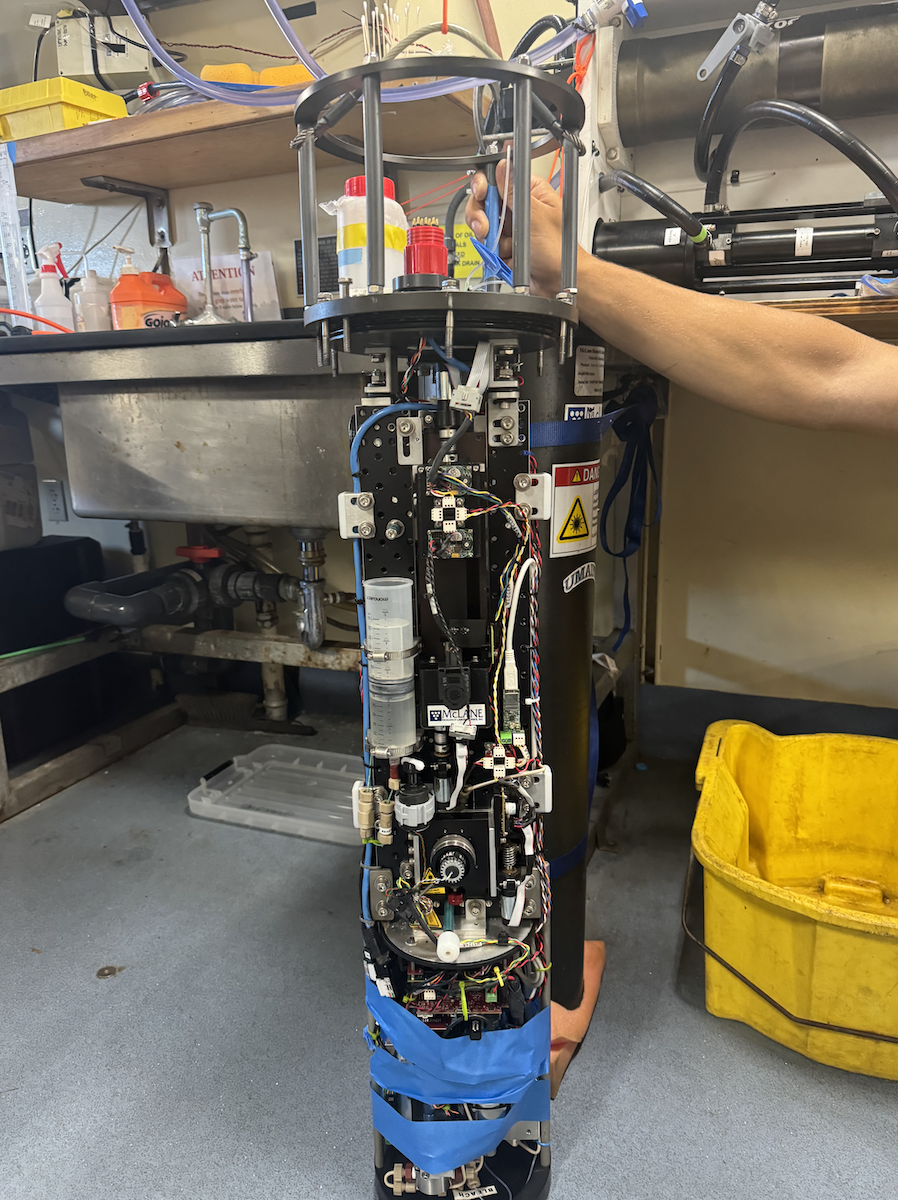 – IFCB outside of its Titanium Case
– IFCB outside of its Titanium Case
This week, I also got to learn more in depth about the imaging flow cytobot instrument (IFCB). An imaging flow cytobot is used for multiple things but it can detect, size and image cells floating in the water. It’s a great tool to get an idea of community distribution of phytoplankton in real time. Most labs have a program they run the samples through that also help identify the species of phytoplankton.
However, there’s genuinely no better way to learn more about an instrument than when you’re learning to troubleshoot it to diagnose a problem. Due to the humid nature of the ship, we suspected that the humidity may have interfered with some of the sensors on the instrument. Therefore, we spent a couple of hours investigating until it was finally decided to just call the manufacturer and have them walk us through the different parts of the instruments and its troubleshooting.
Ali’s set up also features Spectral Absorption and Attenuation Sensor (AC-S), Submersible Particle Size Analyzer (LISST) and the Hyper-Spectral Backscatter Instrument (HYPER BB) all linked up to the ship’s underway system to take a look at the different properties of the water. It is super cool to say the least and I look forward to diving into more about it next week.
Cheers,
Briana

– Ferry Terminal in Mo’orea, French Polynesia

– The beautiful RV/Kilo Moana in Papeete, French Polynesia

